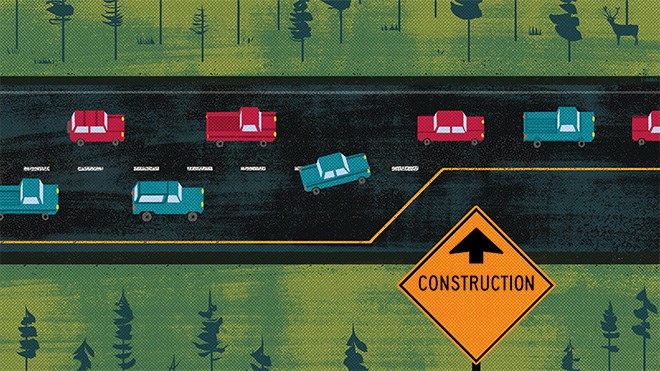Don't you hate it when you're sitting in traffic in a construction zone and some jerk passes you in the closed lane and manages to merge into the long line of cars ahead of you? Well, you should know, that rude guy that cut in line is actually right.
It's called zipper merging and if you aren't lining up in the closed lane, you should.
In the midst of construction season, the City of Greater Sudbury shared this graphic of a zipper merge in hopes of educating drivers.
"The zipper merge works by simply having drivers delay their merge until the lane has come to an end," the city instructs. "Then at the precise point of the bottleneck, drivers from each lane take turns entering the gap, like a zipper."
Remember, letting people in 200 metres away from the bottleneck point is not doing anyone any good.
"When a line of traffic isn't forced to come to a virtual halt in the chaos of early merging, it allows traffic to maintain momentum that gets it past the obstruction quicker."
So be bold - drive in the closed lane and encourage your friends to do the same to help reduce traffic congestion.
